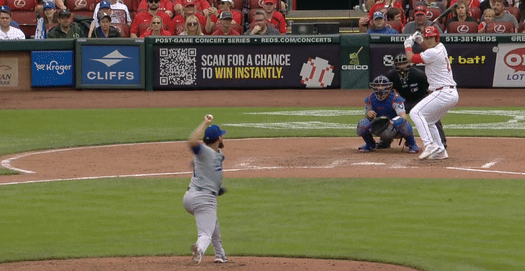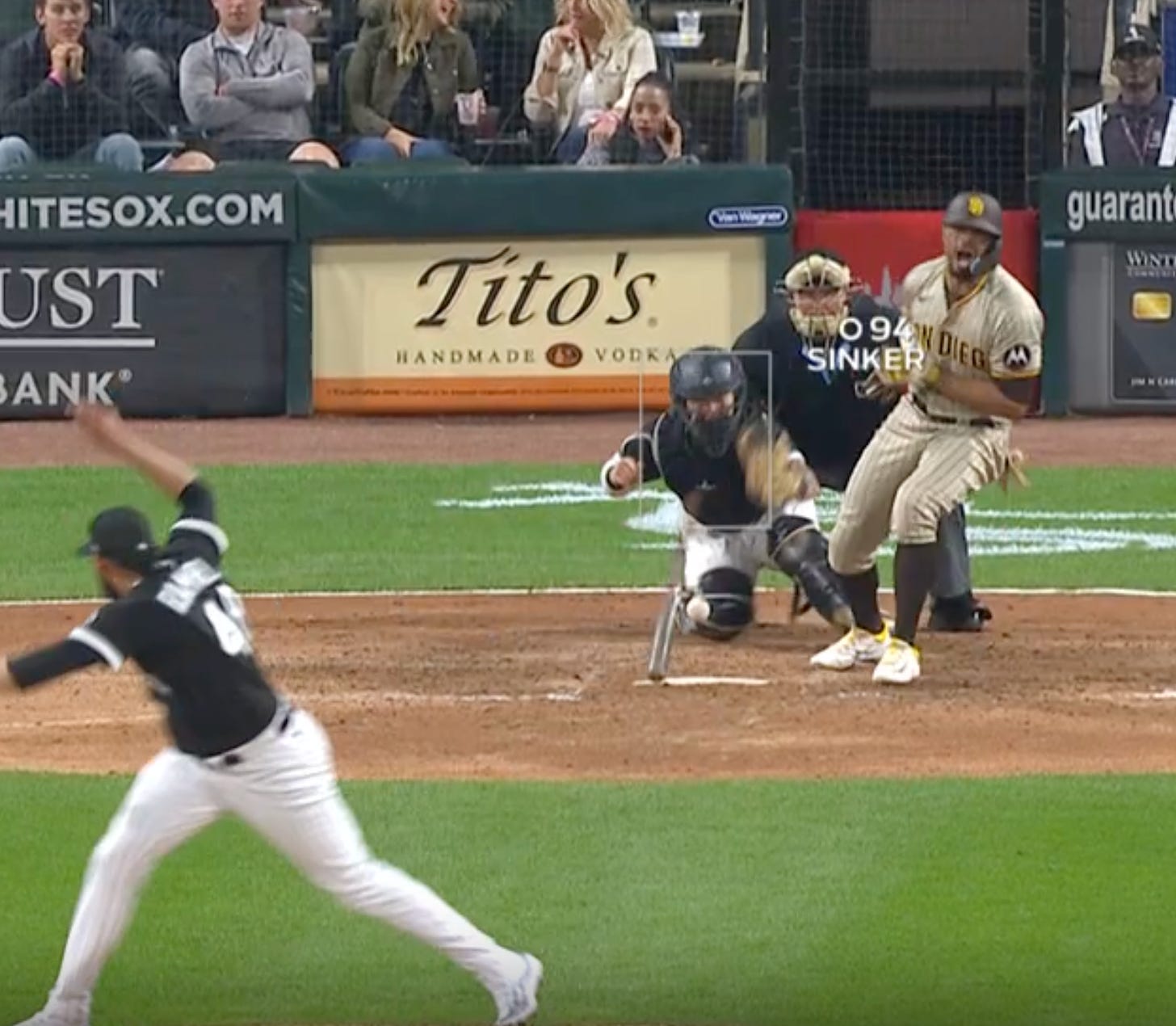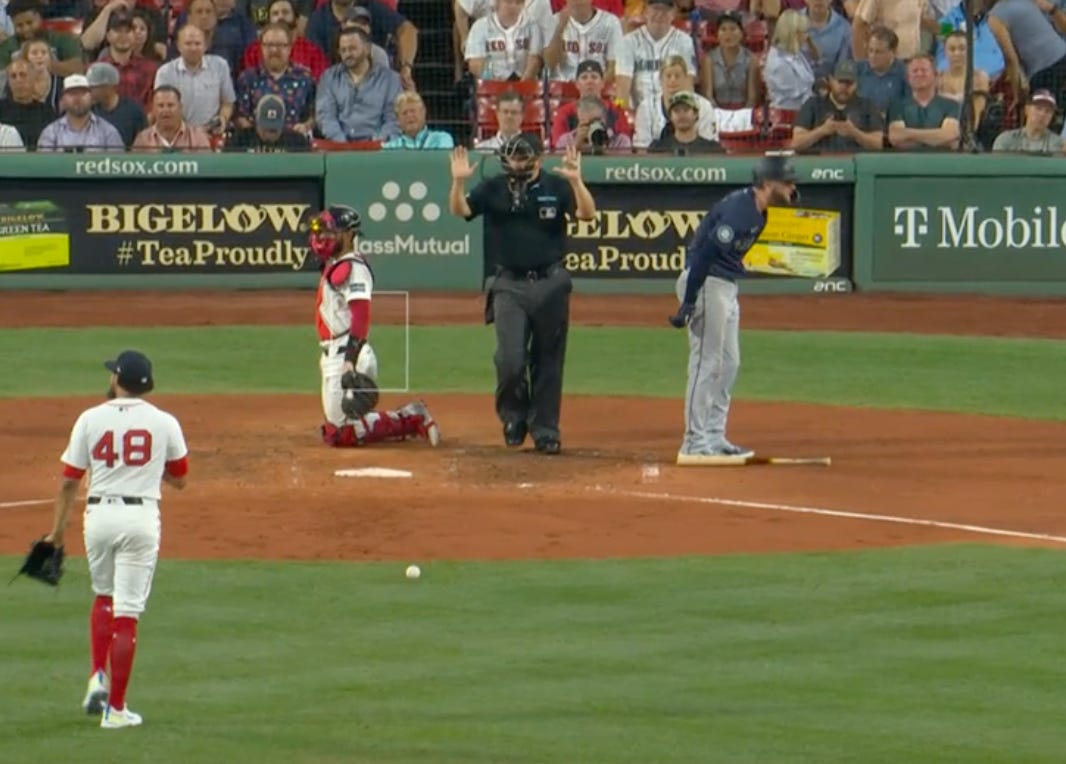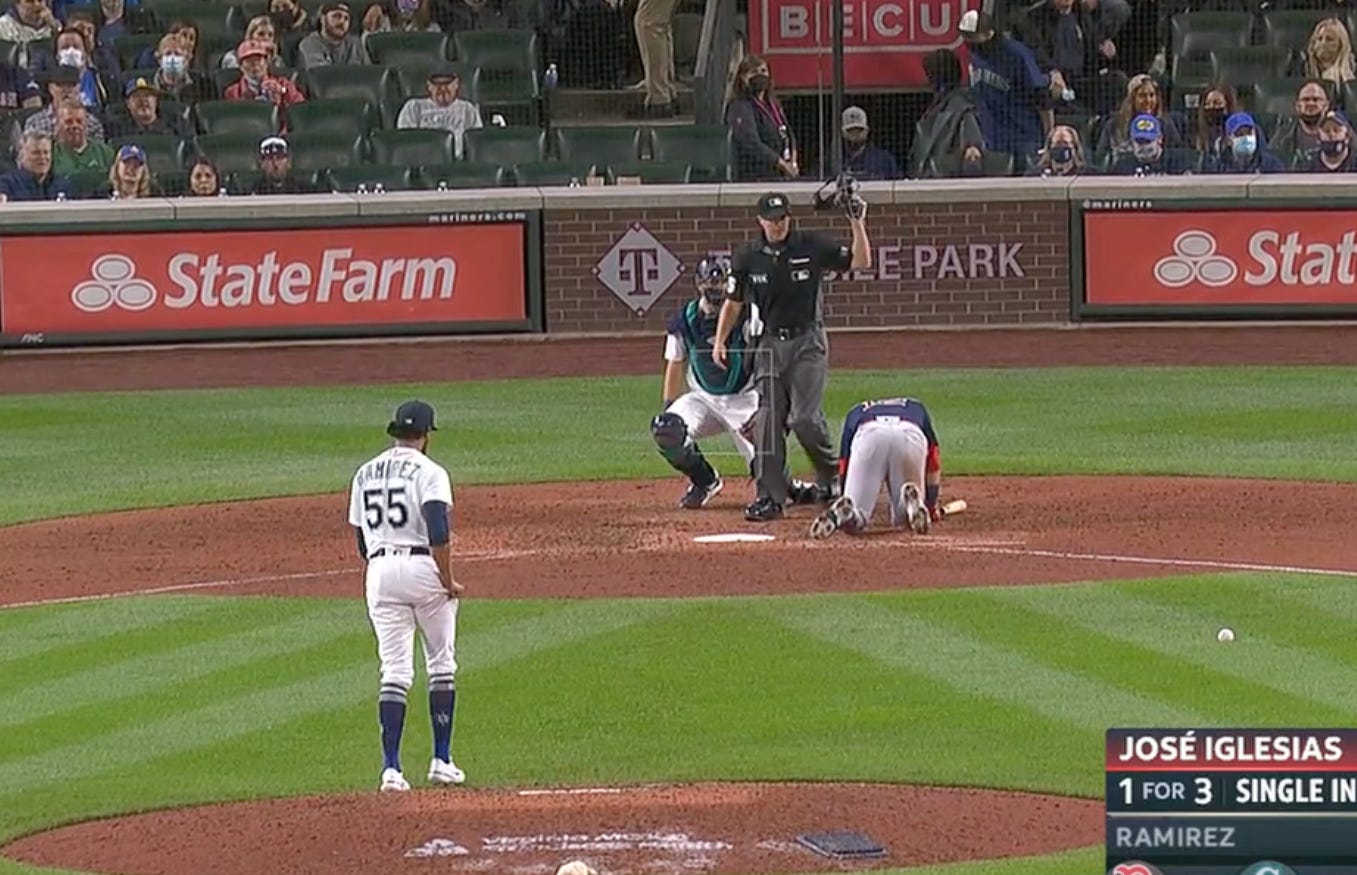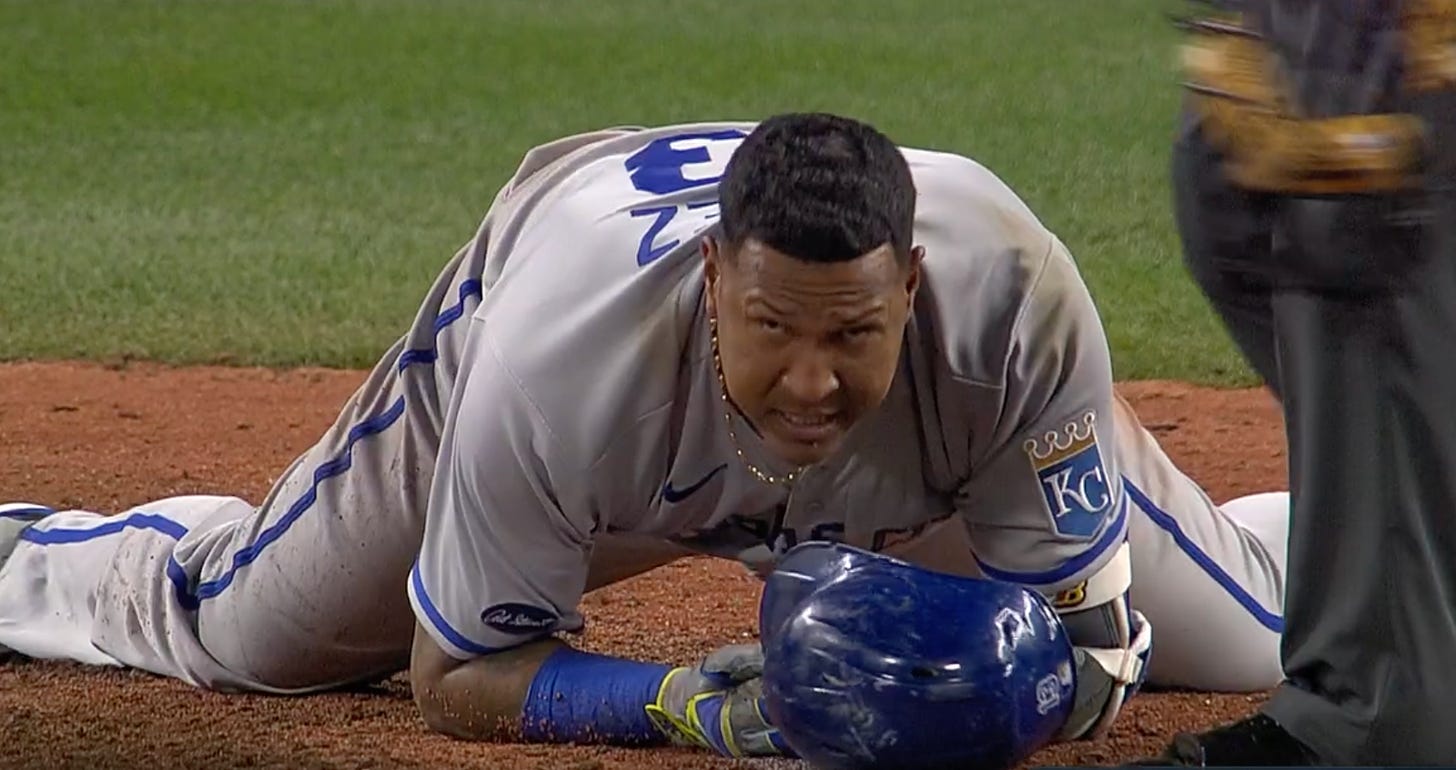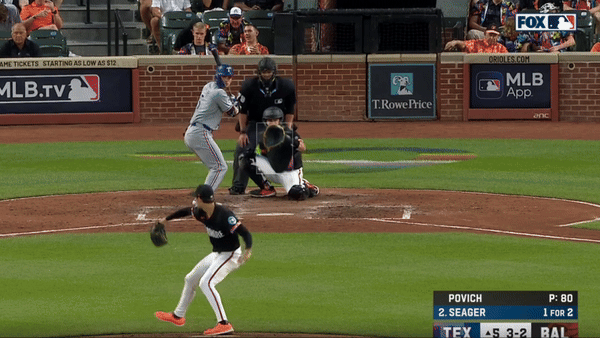I Dream Of Fewer Broken Wrists
Whit Merrifield wants new rules to solve the HBP crisis. I've got one!
There are two types of pitchers who hit a lot of batters. One type is Austin Adams, who throws almost nothing but sliders. When he yanks one, it goes at a left-handed hitter’s feet, and when it backs up it goes at the right-handed batter’s hip. Adams has hit more batters, per plate appearance, than anybody in modern baseball history. Generally, you’re not too upset when Adams hits you. Soft plunking, free base.
The other type is Yohan Ramirez, the Destroyer Of Hands. He throws two-seamers with top-of-the-scale movement. With his extreme release extension, the perceived velocity of that fastball—batters’ reaction time, basically—is around the 80th percentile of all two-seamers. And he’s wild. Ramirez has hit the second most batters, per plate appearance, of anybody in modern baseball history.
As far as I can tell, he hasn’t actually put anybody on the injured list. But the people Yohan Ramirez hits are usually very distressed.
2.
Last week, the Braves’ Whit Merrifield got hit in the back of the head with a pitch. Ramirez didn’t throw that one; a rookie Rockie named Jeff Criswell did. Merrifield was fine, thankfully, but after the game he was very upset, not just at Criswell but at the state of throwers around the league.
“The teams are bringing pitchers up that don’t know where the hell the ball is going,” he told reporters. “It’s frankly pathetic, that some of the pitchers that we’re running out there don’t know where the ball’s going, at the major-league level. It’s got to be fixed. It just pisses me off to no end.”
He wasn’t talking about Ramirez specifically, but Ramirez might come to mind. Ramirez doesn’t have a ton of idea where the ball is going. In his five-year career, his walk rate is bad, his wild pitch rate is worse and his hit-by-pitch rate is historic. Yet he’s still in a strange kind of demand. In just those five years, he’s pitched for eight teams, including four this season. All four of those teams have winning records and three are in line to make the playoffs. He has good stuff, he avoids hard contact, he’s way too wild—he’s the sort of pitcher good teams can’t employ for long, but in the modern game someone’s always trying.
Merrifield continued:
“I’m on the Rules Committee, and we’ve got a call (Wednesday), and it’s going to be a long conversation on what we’ve got to do to make pitchers think about.”
Merrifield also suggested that part of the problem is that pitchers don’t have to bat anymore, and therefore don’t fear retaliation. The implication is that pitchers wouldn’t accidentally hit batters if the other teams could intentionally hit them back. I think that’s hard to prove, and even harder to address by a rules committee, but okay, that’s where a lot of ballplayers probably are on the issue.
I do agree there’s a problem. Batters are getting hit by more pitches than ever before—the five highest HBP seasons in the modern era are these past five, and the rate this year is more than double what it was in the early 1990s and earlier. Batters are also getting hit by much faster pitches. Fifteen years ago, just 1 percent of HBPs were on pitches 97 mph or harder. This year, 6 percent are.
I’ve long carried around an idea for a solution1 to this problem. It would change the game in some significant ways, but I think it’s consistent with the spirit of the rules that we have, it’s feasible in the modern age, and it doesn’t involve using retaliatory violence as the guardrail. I’m not actually sure it would work? But with Merrifield raising the subject, let’s talk about it.
My proposed rule is:
Instead of giving a batter first base if the pitch hits him, give him first base if the pitch is way inside (and he doesn’t swing at it).
Just as we have a strike zone for pitchers to aim for, we would have a no-go zone—enforced by the league’s pitch-tracking technology—that pitchers must avoid. If they throw it in the no-go zone, they’re penalized by a free base, every time, so buddy don’t even think about throwing it there.
3.
The rule that a batter gets first base when he’s hit by a pitch dates to 1884. “[The pitcher] is punished whether it is intentional or not, and justly so,” the Sporting Life wrote that year. “For if not intentional it is from want of proper command of the ball, and if he has not that the rule will teach him to acquire it.”
One base for one HBP was a necessary change at the time2, but it was seen as a pretty radical one, according to Peter Morris, in his book The Game Of Inches:
Some found the whole concept bizarre, such as the sportswriter who filed this report: “Five of the Quincys were given first base yesterday under the rule awarding the batter a base for being struck by a pitched ball. None of those so struck was injured in the least, and it was noticed that they finally scored without exception. Another such farcical innovation was never introduced into the game.”
The new rule didn’t eliminate brushback pitching, but it did the next best thing by ensuring that there was again risk on both sides.
Since then, hitting the batter has been against the rules, hence the penalty. But if a pitcher isn’t allowed to throw a pitch here:
then it’s arguably overcomplicated to make the penalty contingent on the batter’s agility. Or, put another way:
A pitch is thrown at the batter’s body, and the batter successfully tries to avoids it.
A pitch is thrown at the batter’s body, and the batter unsuccessfully tries to avoid it.
The way the rule is now, the pitcher is rewarded by the batter’s success, and punished by the batter’s lack of success, even on two identical pitches with identical intentions? And the batter, who is instructed by the (never enforced) rules that he must try to avoid being hit, is rewarded with a base only when he fails? That’s weird!
Now, it’s obvious why the rule that we have, an imperfect mechanism for its aims, has been what it has been. The technology to do otherwise didn’t exist in 1884, or even 1984, or even 2004. The rule was written the way it was so that a consistent standard—did it hit the batter?— could be enforced. You couldn’t previously enforce my proposed rule with any consistency. Now, with Statcast, you could. Lemon squeezy.
4.
How much would my proposed rule change things?
Keep reading with a 7-day free trial
Subscribe to Pebble Hunting to keep reading this post and get 7 days of free access to the full post archives.




